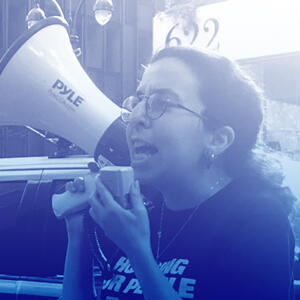The Twin Cities made history Tuesday as the first in the Midwest to enact rent control.
In St. Paul, a new law will cap annual rent increases at 3 percent, applicable to all buildings. In Minneapolis, voters authorized their City Council to draft a rent control ordinance — details to come.
The Minnesota measures are some of the boldest in the country, experts say, and follow a trail of tenant-friendly housing policies enacted in the past few years. New York strengthened tenant protections in 2019, Oregon adopted rent control the same year and California followed in 2020.
In New York, good cause eviction is on the docket, a bill the real estate industry deems “universal rent control” as it would shield renters from eviction if their landlord raised the rent by more than 3 percent, or 1.5 percent of inflation, whichever is higher.
Advocates for the tenant-side agenda in New York see momentum that could boost the chances of passing good cause when the legislature convenes next year.

VOCAL-NY’s Joseph Loonam
“The national trend toward greater protections is really encouraging,” said Joseph Loonam, housing campaign coordinator at VOCAL-NY, a statewide community organizer lobbying for Good Cause.
Loonam said he views the Minnesota results as a sign that constituents across the country are “waking up to the power imbalances between landlords and tenants,” which he said the pandemic exposed.
Read more

While pandemic-induced unemployment made it difficult for some tenants to make rent, a hot housing market subsequently pushed rents to record highs, adding further strain. For their part, landlords have argued that missed rent, exacerbated by eviction moratoriums, has hit them hard as well.
A handful of New York municipalities have adopted good cause this year, which Loonam said is further evidence that sympathy for tenants’ plight is spreading.
“People really want legislation like this,” Loonam said. “They want more tenant protections; they want more security in their homes.”
In St. Paul, voters adopted rent control by a modest majority — 53 percent. However, the tenant-side win came despite a $4 million opposition campaign, the Minnesota Reformer reported. The rent-control campaign raised a measly $200,000.
The policies came on the heels of an incredibly tight year for affordable housing in the Twin Cities. Vacancies dropped to a national low, the Star Tribune reported, and record-breaking housing prices pushed rents up 4.5 percent over the 12 months ending in August.
Loonam sees a similarly “dire situation in New York,” where the state’s rental assistance fund is down to the dregs and the eviction ban has about 10 weeks left. He hopes New York legislators will likewise turn to more permanent policies to help tenants.
“Good Cause would provide protections essential to preventing a massive wave of evictions,” he said. (Nearly 1 million units in the state, including more than 900,000 in New York City, are already rent-regulated, and tenants in them who don’t violate their leases are guaranteed renewals.)

Met Council on Housing’s Andrea Shapiro
Andrea Shapiro, program and policy director at the Met Council on Housing, said tenant wins in Minneapolis and St. Paul are evidence that rent control can keep tenants in their homes, particularly tenants of color and low-income renters, who were harder hit by the pandemic.
“I think it also shows that good cause is not as radical of a bill as some legislators claim,” she said.
Because good cause is a defense in court against eviction, and not a law that would be enforced by a state agency, Shapiro said it is not rent control.
However, researchers are less inclined to see Minnesota’s votes on rent control as a sign that tenant-friendly policies are on the rise.
“It’s hard to say, on average, which direction we’re moving,” said Christina Stacy, principal research associate with the Metropolitan Housing and Communities Policy Center at the Urban Institute. “There are certainly some states where there aren’t many tenant protections and the landlords have a lot of control, and there are others where the tenants have more control.”
New York’s Housing Stability and Tenant Protection Act of 2019, for example, gave stabilized renters in New York substantial leverage over their landlords, barring almost all routes for a property owner to pull a unit out of stabilization or hike rents by more than a few percentage points.
Meanwhile, Arkansas, ranked last in the country for renter protections by RentCafe, allows landlords to terminate a tenant’s lease just five days after the rent is past due, no warning required.
Rent control, Stacy noted, is not a blanket solution to affordability issues.

Urban Institute’s Christina Stacy
Stacy said rent regulation in many locales still allow for vacancy decontrol, in which a landlord can bump a unit’s rent to market rate if a tenant vacates. The policy opens the door for harassment of tenants, such as shutting off utilities, to force them out.
New York’s 2019 law eliminated most decontrol options as well as rent stabilization’s 20 percent rent hike for vacancies.
More complicated rent control structures, such as those that include politically appointed bodies — New York City’s Rent Guidelines Board, for example — can leave tenants seeking more protection from increases. (Landlords, for their part, say the board does not allow rents to keep pace with their expenses.)
Economists warn of rent control’s unintended consequences — that in St. Paul, for example, it could push landlords to convert rentals to condos or discourage construction of rentals, exacerbating the housing shortage. They say it can dissuade landlords from maintaining and upgrading their buildings, leading to a deterioration of the housing stock, and that it does not target benefits to the neediest tenants.
Still, Stacy sees the spread of good cause in New York and measures in other states as a sign that tenants are gaining an edge, albeit a slight one. But she noted that tenant advocates’ sense of progress varies depending on which ones you’re talking to.
“Even with these enactments of rent control or reforms that have occurred in the recent past,” she said, “it seems like tenant advocates aren’t always super happy with where they’ve landed.”
